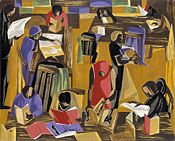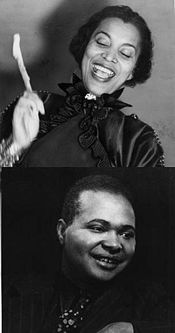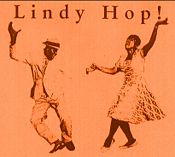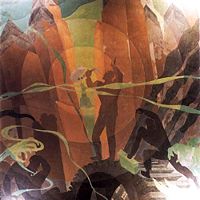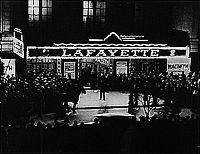| wiki | search |
Main Page | Groups and Assignments | Bios | History | Harlem | Diversity Today | Help
Harlem Renaissance and Literature (Joanna Yau)
Writers of the Harlem Renaissance created a wide range of literary works from poetry to plays to prose, and to novels. The main themes of the writing were about racial identity, equality, black life in the South and North, and other racial issues. Authors of the Harlem Renaissance used a different style of writing. It deferred from the white standards’ form of writing and created their own writing style utilizing themes, idioms, and jargon that pertained to their culture and community. Some of the leading writers during “The New Negro Movement” were Langston Hughes, Zora Neale Hurston, Countee Cullen, just to name a few.
Leading Figures-Langston Hughes (Oscar Meza)
A famed writer during the Harlem Renaissance, Langston Hughes wrote about aspects of black life that many did not know about. Since many were blinded and only believed in racial stereotypes, Hughes aimed at separating blacks from their stereotypes. This would bring about a new black identity; one that is rich and unique in many ways. His literary works brought black pride to the Harlem Renaissance, which helped "the new black" establish his identity.
Harlem Renaissance Lives-Countee Cullen and Zora Neale Hurston (Miriam Braun)
A short look at the lives of two prominent figures of the Harlem Renaissance. Both Countee Cullen and Zora Neal Hurston were pioneers in their writings, being some of the earliest black writers to have works published, and their words have a lasting effect until today, as their legacies' remain.
Renaissance and Dance (Eilene Lei)
Dance was a way of escape for African Americans during the Harlem Renaissance. It was used to forget about the economic realities that they faced in their daily lives even if it was just for one night. Their fast paced dances, such as the Lindy Hop, were a far contrast from what many Americans were used to seeing. Thus people of all colors were intrigued and enjoyed dances performed by African Americans at places such as the Savoy Ballroom.
Renaissance and Music (Dmitiry Berenzon)
Music played a pivotal role during the Harlem Renaissance. The emergence of talented black musicians developed a strong reputation for blacks and music. Jazz and blues was the music that vocalized Harlem’s nightlife. Jazz and blues became the most popular forms of music and influenced the development of other genres.
Harlem Renaissance Art (Wendy Huang)
At the start of the Harlem Renaissance, White Americans found it hard to believe that African Americans, a group of people who had been freed from slavery for merely fifty years, could produce art that would speak to and move people everywhere. Race was a burden to Harlem Renaissance artists, but a number of painters and sculptors, including Sargent Johnson and Aaron Douglas, broke through the barrier of doubt and became successful. Harlem Renaissance art displayed a lot of traditional African art techniques, but most of the pieces reflected African Americans' new lives in glorious liberty.
Renaissance and Theatre (Dmitriy Berenzon)
With the beginning "Three Plays for a Negro Theater", theatrical performances began to bloom. African American culture was able to be expressed on stage. The movement allowed blacks to convey complex human emotions and yearning, which defeated the longstanding black stereotypes.

